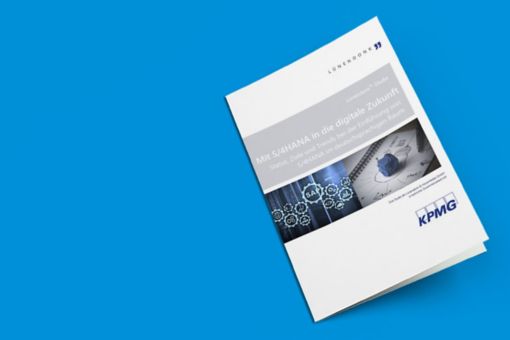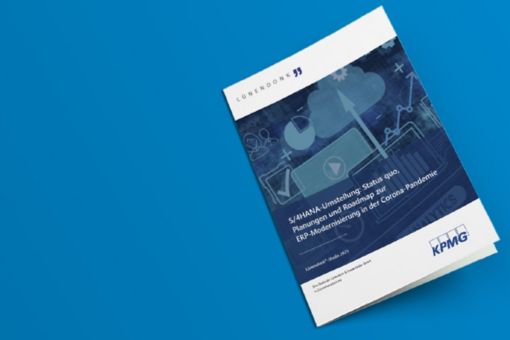Approach SAP S/4HANA the right way
Asking questions | Defining goals | Managing projects | Mastering transformation | Project examples | Webcasts | Publications
In order to properly tackle the ERP transformation to SAP S/4HANA, you need all the relevant information - comprehensive, but bundled as compactly as possible. You will find this information on these pages and in the publications that we have compiled for you to download here.
We wish you an inspiring read.
With SAP S/4HANA into the digital future
Our survey, which we conducted in summer 2019 together with Lünendonk among large companies in German-speaking countries, shows that around ten percent of them have already switched to SAP S/4HANA, the new ERP generation from SAP. Most are currently in the planning stage and will not start an implementation project until 2022 at the earliest. Then there could be bottlenecks in the necessary specialist staff and project backlogs.
Among other things, the companies expect significantly better data quality, greater automation and a modern and standardised IT landscape from the ERP migration.
However, 57 percent of those surveyed only want to migrate their ERP system technically to SAP S/4HANA for the time being, i.e. within the existing process landscape (brownfield approach). The main reasons cited are the use and optimisation of existing processes and structures, the possibility of faster implementation and less effort.
The majority of the companies surveyed (56 percent) want to operate SAP S/4HANA as an on-premise solution, i.e. on their own systems. Operation in the cloud has only played a role for a few of those responsible so far.
Marco Lehmann
Partner, Consulting, Head of Technology Transformation
KPMG AG Wirtschaftsprüfungsgesellschaft
SAP S/4HANA transformation in times of Covid-19
The study "SAP S/4HANA conversion: Status quo, plans and roadmap for ERP modernisation in the Corona pandemic" by KPMG and Lünendonk follows on from the first survey conducted in summer 2019. Between August and October 2020, we asked a total of 100 IT managers in companies in the DACH region about how Covid-19 and SAP's extension of the maintenance period for the current ERP versions have changed their SAP S/4HANA planning.
Core results:
- SAP S/4HANA conversion continues to be a high priority: the majority of companies surveyed have adjusted the project scope to the changed conditions during the pandemic, but only a few companies have stopped SAP S/4HANA projects until further notice.
- Timetable rarely stretched despite SAP offer: Most companies plan to complete the changeover in full by 2025. A good two-thirds want to start the rollout between 2021 and 2023.
- Corona has an impact: For 54 per cent of companies, the need to build new digital business models is one of the main reasons to approach the SAP S/4HANA migration in a more focused and accelerated way.
- Change with regard to the migration strategy: The preference for a purely technical migration within the existing process world (brownfield approach) has fallen sharply. In contrast, interest in a mixed approach (brownfield and greenfield) is growing significantly.
- Cloud is gaining acceptance: More and more companies are relying on the hybrid cloud (combination of on-premise, private and public cloud) for the operation of SAP S/4HANA. Pure on-premise use is losing importance. Furthermore, only a small minority is aiming for SAP S/4HANA use exclusively in the cloud.
Download now (PDF in German only): „SAP S/4HANA-Umstellung: Status quo, Planungen und Roadmap zur ERP-Modernisierung in der Corona-Pandemie“




